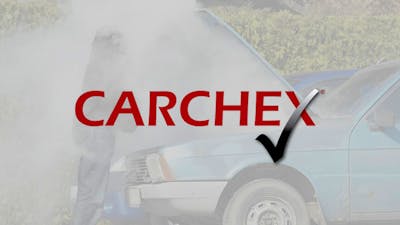Electric Vehicle Battery Replacement Cost
Electric vehicles are becoming increasingly popular with consumers. However, a poor public charging infrastructure and other ownership challenges give some buyers pause. One concern that J.D. Power and Associates cites as a barrier to greater EV adoption is concern over the cost of having to pay out of pocket to replace the very expensive EV battery.
Popular Warranty Providers
It has been relatively hard to answer with accuracy what the cost is to replace an electric vehicle’s battery if it fails outside the warranty but before the end of the vehicle’s useful life. Manufacturers have been covering most EV battery failures under warranty, and in some cases, they may cover the batteries beyond the span of the warranty or financially assist owners with battery-related problems.
New data is starting to emerge that shows just how expensive it is to replace an EV’s battery. We can share this information, but first, we need to have a word about the product life cycle of a battery-electric vehicle (BEV).
A BEV is a battery-only vehicle, such as all Tesla models, the Ford Mustang Mach-E, and the Chevy Bolt. We will focus on these types of vehicles in this story rather than include plug-in hybrid-electric vehicles and hybrid-electric vehicles. BEV batteries are big physically, large in terms of energy storage, and they are the most expensive part of the vehicle in which they operate.
Every automaker designs the battery for a BEV to last the entire service life of the vehicle. There is no maintenance change ever planned. There is no expectation for the battery to be replaced at the owner’s expense as the vehicle ages. For many reasons, replacing the battery is not a practical thing for BEV owners to do. Future designs may be different, but for now, there is no scenario in which an owner is expected to pay for a replacement battery in the BEV they own.
We suspect you want to know the EV battery replacement costs out of warranty, so we won’t make you read the whole story (though we hope you will). Our research shows that the cost to replace the battery in an out-of-warranty scenario is typically about the same as the value of the vehicle itself on the used market.
What is an Electric Vehicle Battery, and What Does it Do?
This may seem like a trite question, but let’s answer it anyway. The electric vehicle battery we are discussing is the battery that provides power for propulsion. It is sometimes called a “high voltage battery” or a “traction battery.” EVs use batteries to store and deliver energy to the electric drive motors. So what doesn’t an EV battery do?
EV batteries do not directly power the lights, infotainment system, power door locks, power seats, and other things that are electric in the BEV. That power comes from an age-old source - a 12 Volt battery. That battery is replaceable and inexpensive, on the order of about $300. In many ways, it is just like the battery in any other vehicle powered in any other way. Let’s not confuse the 12 Volt battery with the drive battery in an EV.
How Are EV Batteries Built?
BEV batteries are built by a small list of suppliers. Panasonic was Tesla’s initial supplier. Today, CATL, LG, and BYD are larger suppliers than Panasonic. For the most part, automakers either use the supplier’s battery or are engaged in a joint business venture with the battery maker. Automakers want you to think of them as being in the EV battery business, so they brand their batteries. A good example is GM’s Ultium battery business, which is a partnership with battery maker LG.
Some EV batteries use many small individual cells all working together in a large enclosure, like a box. Other EV batteries use larger and fewer cells. One way to think of an EV battery is that it is really a lot of smaller batteries working together to get the job done. The total enclosed compartment is called “the battery.”
EV batteries are made using lithium. This is an element, third on the Periodic Table, that is mined, processed, and combined with other materials to create the battery cell. The battery contains a lot of wiring, a lot of insulation, and the entire battery is usually cooled and heated with liquids. Older batteries were simpler, but the lack of thermal management limited their useful temperature range.
Fun Fact: your author’s fifth-year capstone project in his engineering program was to design and build the thermal management system for an EV battery.
The entire battery is encased, usually with aluminum, and protected from damage using high-strength metals. In other words, the battery is inside a big metal box. The box is typically about four feet by about four feet and about a half-foot in thickness, and it is mounted under the center of the vehicle. The battery can weigh over a thousand pounds. This makes EVs significantly heavier overall than conventionally powered vehicles of the same size.
Sometimes, the battery case is even structural, meaning it makes up part of the vehicle’s overall structure and supports other parts of the vehicle. Most often, it is not, and the battery is just placed in the vehicle and rides along.
Typical EV Battery Warranties
EV batteries are so expensive automakers understand they require special long-term warranties. Here is a quick chart with some EV battery warranties. Note that Tesla’s battery warranty varies by model number and even by trim, which we find interesting. Another fact we uncovered is that Kia’s warranty is three years shorter than Hyundai’s. The best warranty seems to be from the startup Vinfast.
| EV Maker and Model | Battery Warranty Years | Battery Warranty Miles | Fine Print |
|---|
As you can see, automakers warranty the batteries in their electric vehicles longer than they do any other component. They also hedge their bets. As they age, EV batteries do not provide their full power range. The expected drop in range, while still remaining under warranty, is typically about 30% over ten years.
One interesting battery warranty story is related to the Chevrolet Bolt. Due to a manufacturing defect, General Motors had a very expensive recall campaign. Part of the recall procedure was for GM to reprogram the EV battery to have a significantly shorter range of operation. Automakers don't guarantee the battery will work as well, or as long, when the vehicle is old as it did on the day you bought the vehicle.
EVs Are Typically Driven Fewer Miles Per Year
Although 100,000 miles may not seem like a long time in the life of a car, eight to ten years is a pretty long stretch. One note we want to make about EV warranties is that the years may end up being the limiting factor, not miles. Studies by our friends at iSeeCars and other publications have shown that most EVs are driven fewer miles per year than conventionally-powered vehicles. The study showed that the highest annual average miles were all Tesla models, and none exceeded 11,000 per year. This is despite rideshare operators boosting the average miles. The study found Nissan Leaf owners typically drive less than 7,000 miles per year. By contrast, the EPA says the overall average in America for all vehicles is 15,000 miles driven per year.
Scenarios in Which an EV Battery May Require Replacement
The modern age of EVs began in the 1990s with GM’s experimental EV-1 and the low-volume Toyota RAV4 EV, but the first modern BEV intended as a mainstream product was the Nissan Leaf, which launched in late 2010. Over the approximately 13 years since the electric vehicle returned to the world, there have been a few scenarios in which battery warranties and replacement costs came into play. Here is a quick rundown of those scenarios;
- Manufacturer’s Defect - Hyundai, Kia, Chevrolet, Cadillac, Hummer, Ford, Tesla, and many other brands have had battery-system-related recalls. In this scenario, the owner pays nothing for the repair. The battery is either replaced, repaired, or the battery-management software is reprogrammed, and the vehicle remains under warranty.
- Crash Damage - One way the world discovered just how expensive EV replacement batteries are came from incidents in which the battery compartment is compromised. Insurers don't mess around when this happens. If a battery compartment is damaged in any way - no matter how minor, the vehicle is typically “totaled.” In other words, the insurer will pay the owner for the value of the vehicle rather than repair or replace the battery.
- Batteries Prematurely Failing - There are some examples where the battery still operates but it drops below its manufacturer-specified capacity drop. In these rare cases, the battery is replaced by the manufacturer. Interestingly, some examples show that manufacturers use a refurbished battery, not a new one, when the warranty is thus invoked.
- Age and Miles - There have been a handful of examples of owners using their BEVs for so long that the batteries wore out and needed replacement.
Examples of Battery-Electric Vehicle Battery Replacement Costs
Over the past year or two, some very interesting case studies have shined light on the true cost of replacing an EV battery. Unlike the price to replace a starter motor or alternator on a conventional car, one cannot simply phone local dealers and ask for example prices. Dealers and manufacturers are very cagey about revealing the cost to replace batteries for BEVs.
The first case study is the Hyundai Ioniq5. Two concurrent examples happened recently, both in Canada. In both cases, the battery case and perhaps other parts of the battery system were damaged by road debris. Although the manufacturer’s warranty was in effect, warranties don't cover accident damage - insurance does. Both owners took their vehicles to their local authorized Hyundai dealer to get an estimate to have the battery replaced using their insurance policy. The prices ended up being about $60,000 Canadian, roughly equal to the price of the vehicle when new. So, from this pair of examples, we know that BEV batteries are extremely expensive to pay out of warranty to replace.
Another example was a Tesla owner who has had multiple batteries in his vehicle replaced. Tesla revealed that the price was $15,000, and that the battery used as the replacement was not a new battery, but rather a refurbished battery installed by Tesla’s service center. In this case, the cost to replace the battery with a used one was roughly equal to the residual value of the used Tesla.
Sources we have found online indicate that the cost to replace the battery in a Nissan Leaf can vary from $3,500 to over $10,000. One source we found listed several examples of battery replacement costs, and linked back to the original sources. Battery costs vary by model, but including labor, the cost to replace the battery in a used BEV generally costs about the same as that used BEV on the market. In other words, the vehicle would be a financial loss if the battery required replacement. One may as well scrap the vehicle and simply buy the same year, make, and model used with a working battery. We would equate this with the cost of having to replace both the engine and transmission in a conventionally powered used car.
How To Eliminate EV Battery Replacement Concerns
Many people want to drive an EV, and we don’t blame them. BEVs offer a satisfying feeling of smooth power delivery, and the environmental benefits appeal to many. We are skeptical of the generalized cost of ownership claims made by those who promote EVs, but if you live where electricity is cheap and gas is expensive, the math is easy. So how can a person drive electric and never worry about having to scrap a used EV if the battery fails out of warranty?
The first way is to simply plan to sell or trade your EV when it is six months from the end of its battery warranty. That is usually about 7.5 years or 9.5 years into the ownership experience. The second way, and the way we think makes the most sense, is to lease. Leasing EVs has always been a great hedge against challenges, and in 2024, many models available for lease come with federal tax incentives. Most leases run for 36 to 39 months. Just be sure to note how many miles your lease allows.
You could also risk it. Battery failures are rare. If you have the means to suffer the loss of the retained value of an eight or ten-year used BEV, then you are among those who need not worry.
Read more on the topic of Owning a Car here.





















